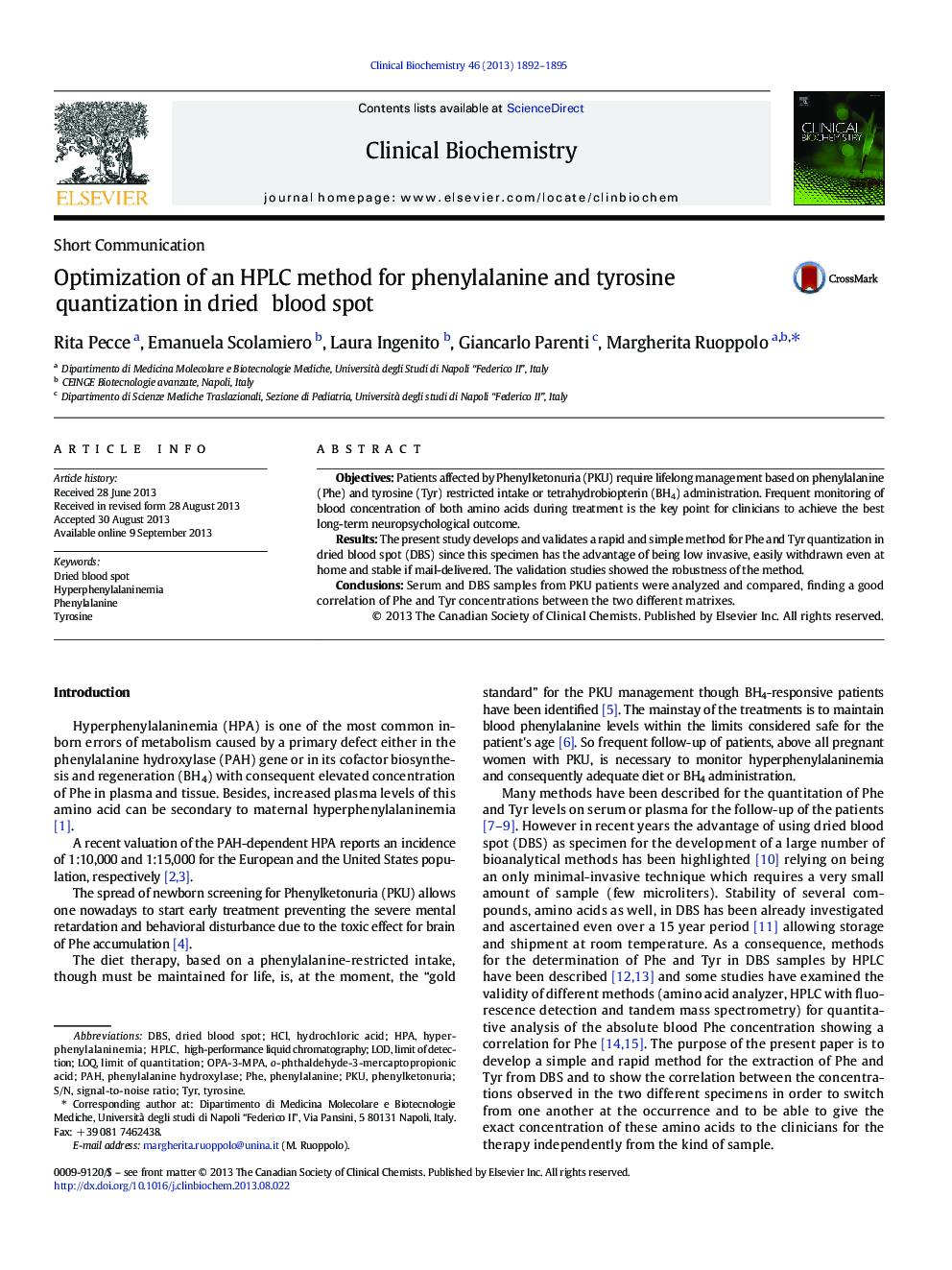| Article ID | Journal | Published Year | Pages | File Type |
|---|---|---|---|---|
| 1968669 | Clinical Biochemistry | 2013 | 4 Pages |
•Monitoring of Phe and Tyr is the key point in the long-term outcome for PKU patients.•Rapid and simple method for Phe and Tyr quantization in dried blood spot (DBS).•DBS is low invasive, easily withdrawn even at home and stable if mail delivered.•Serum and DBS samples from PKU patients were analyzed and compared.•A good correlation between Phe and Tyr levels in the two matrixes was found.
ObjectivesPatients affected by Phenylketonuria (PKU) require lifelong management based on phenylalanine (Phe) and tyrosine (Tyr) restricted intake or tetrahydrobiopterin (BH4) administration. Frequent monitoring of blood concentration of both amino acids during treatment is the key point for clinicians to achieve the best long-term neuropsychological outcome.ResultsThe present study develops and validates a rapid and simple method for Phe and Tyr quantization in dried blood spot (DBS) since this specimen has the advantage of being low invasive, easily withdrawn even at home and stable if mail-delivered. The validation studies showed the robustness of the method.ConclusionsSerum and DBS samples from PKU patients were analyzed and compared, finding a good correlation of Phe and Tyr concentrations between the two different matrixes.
